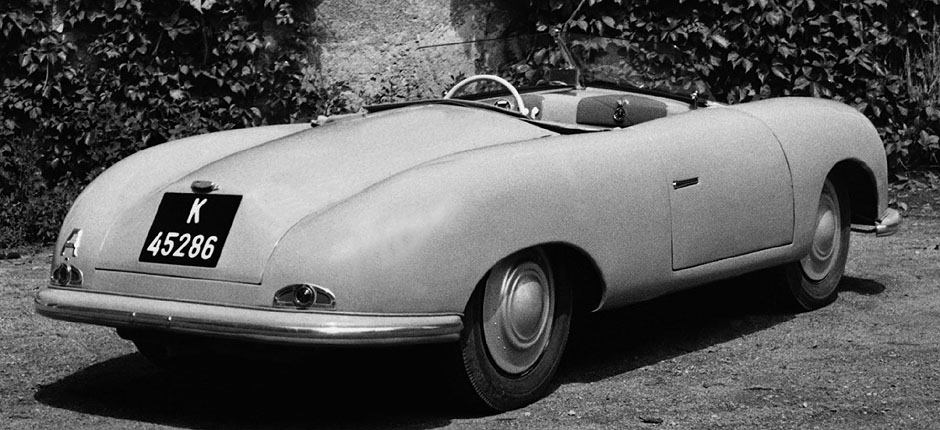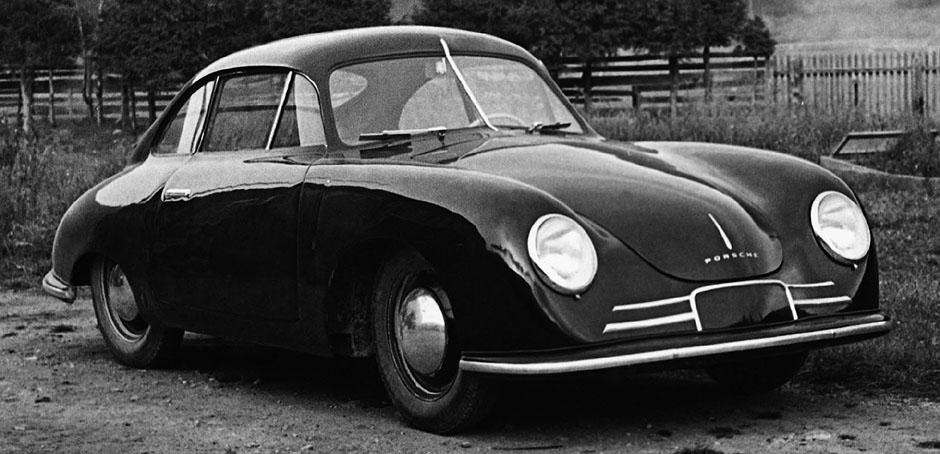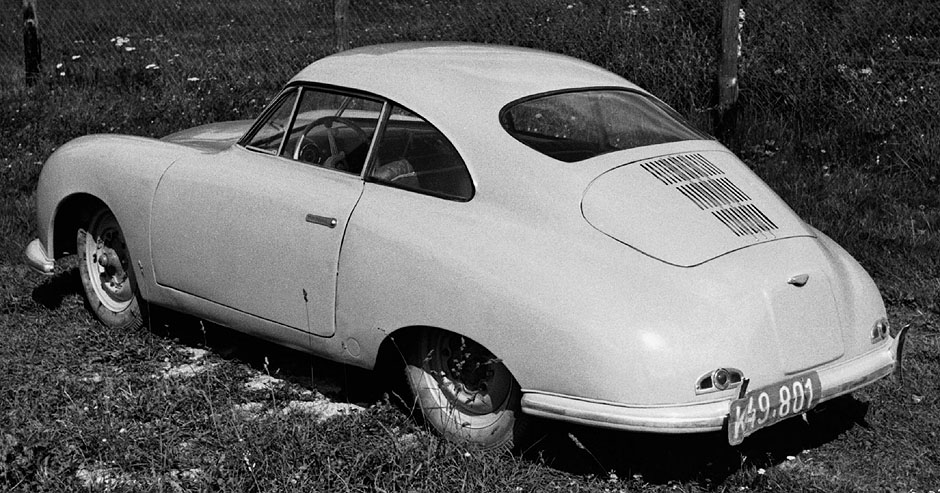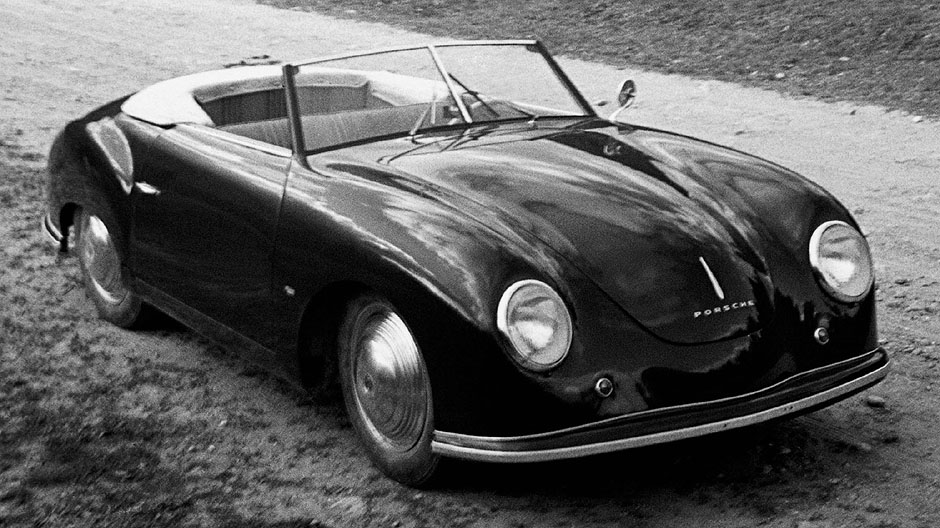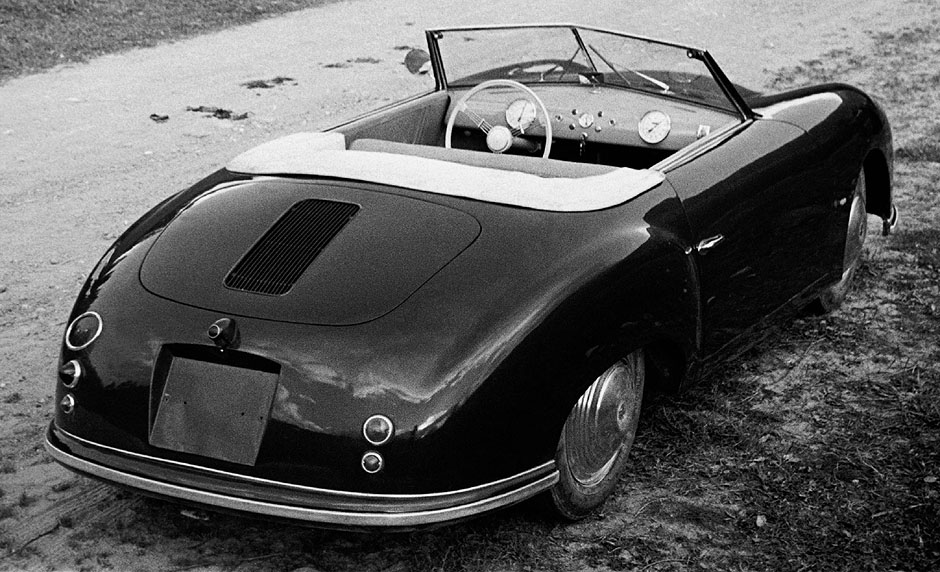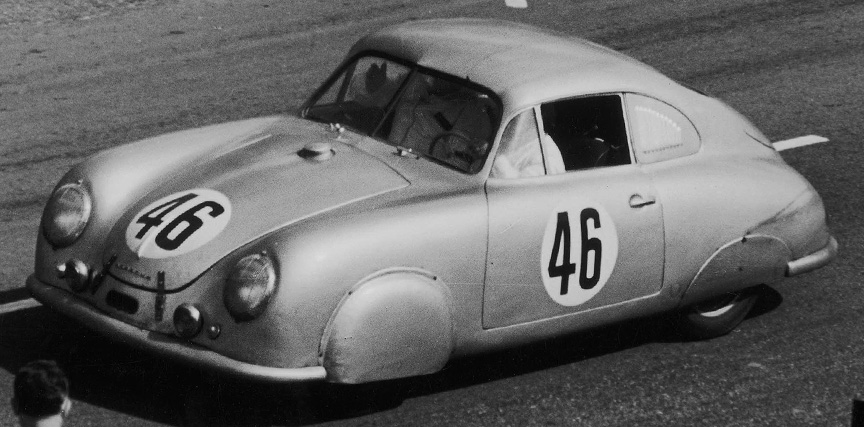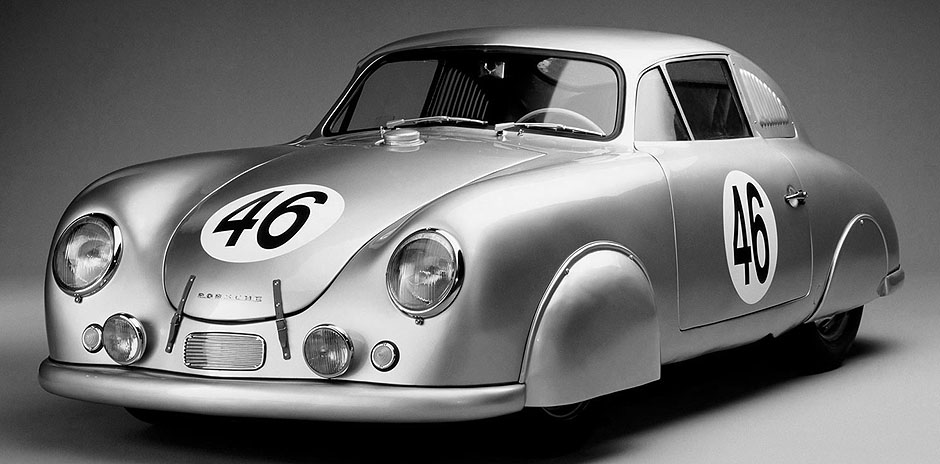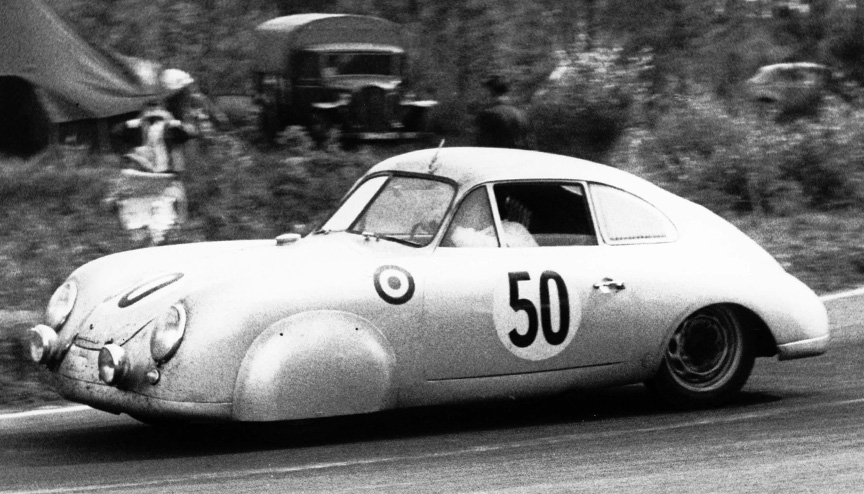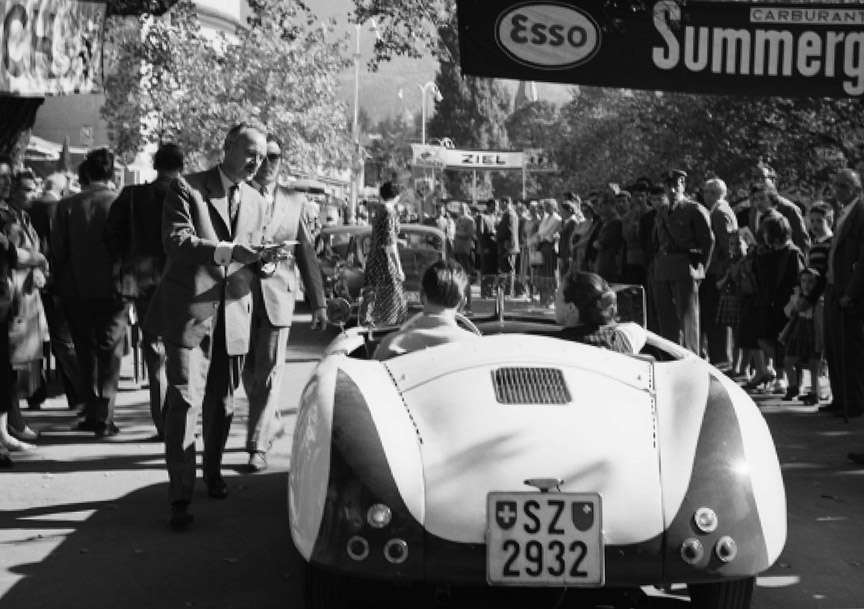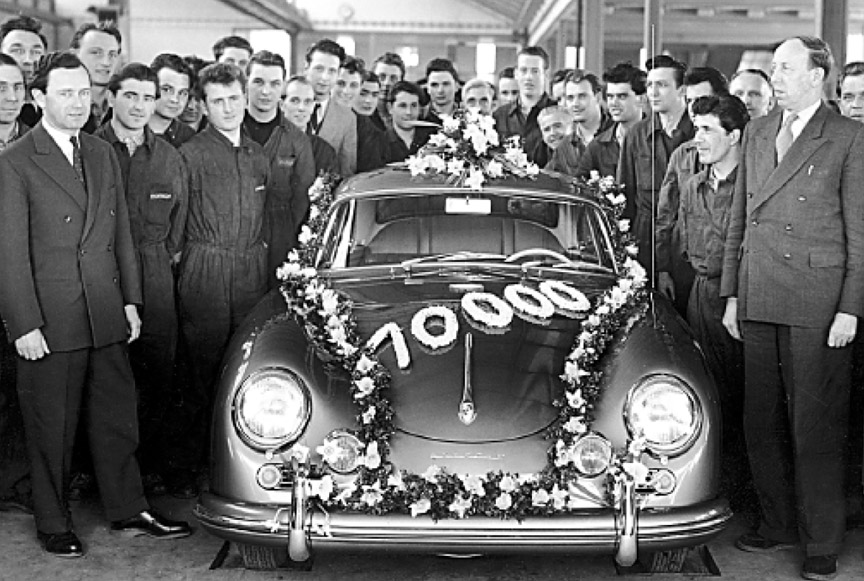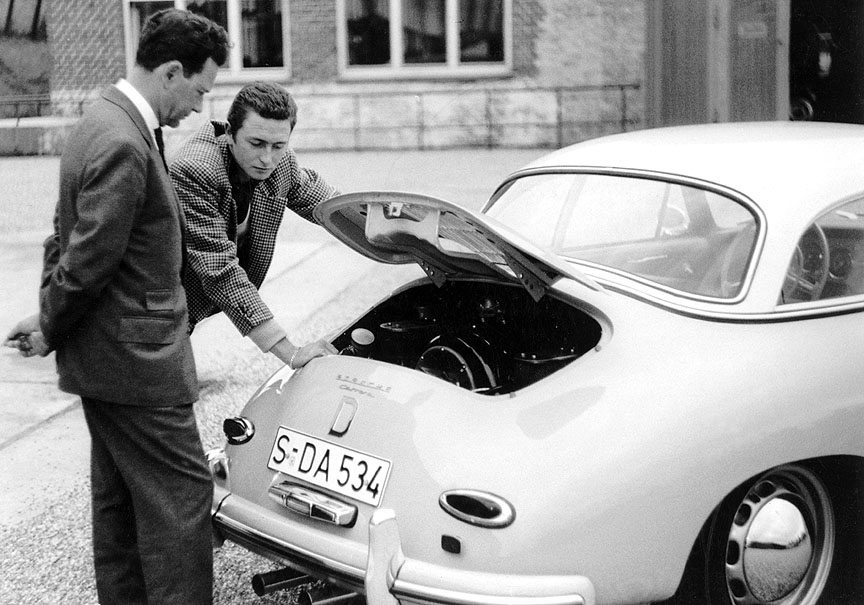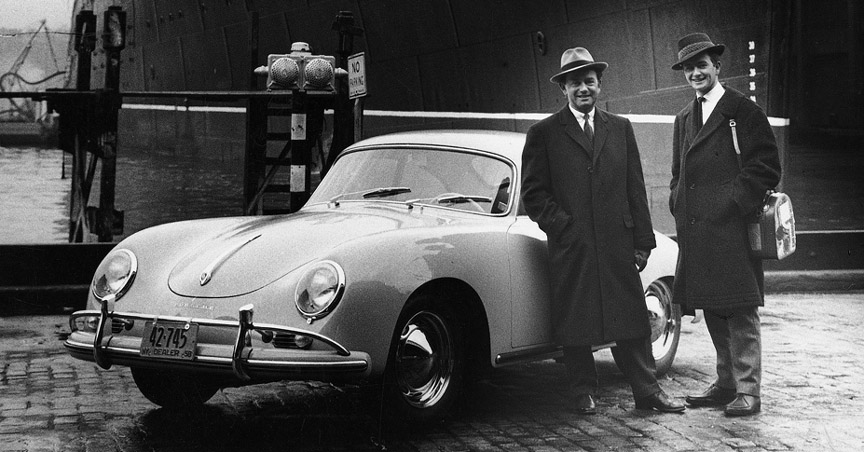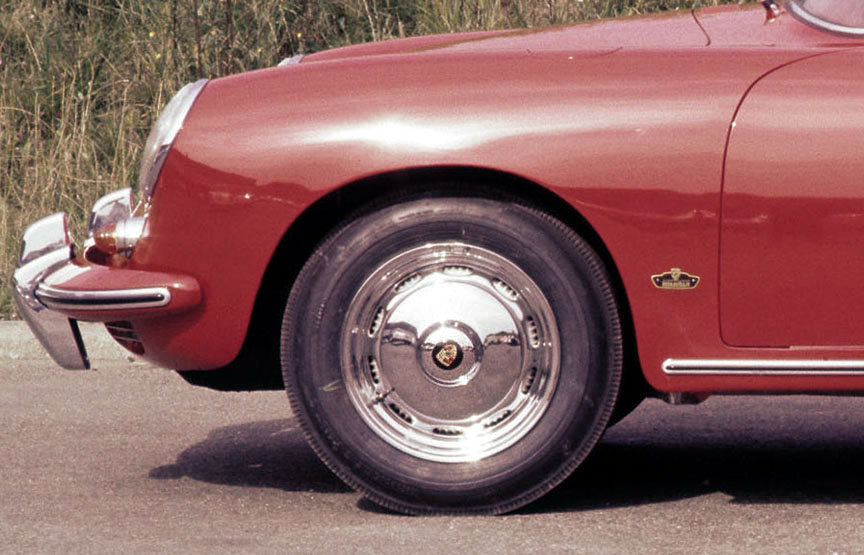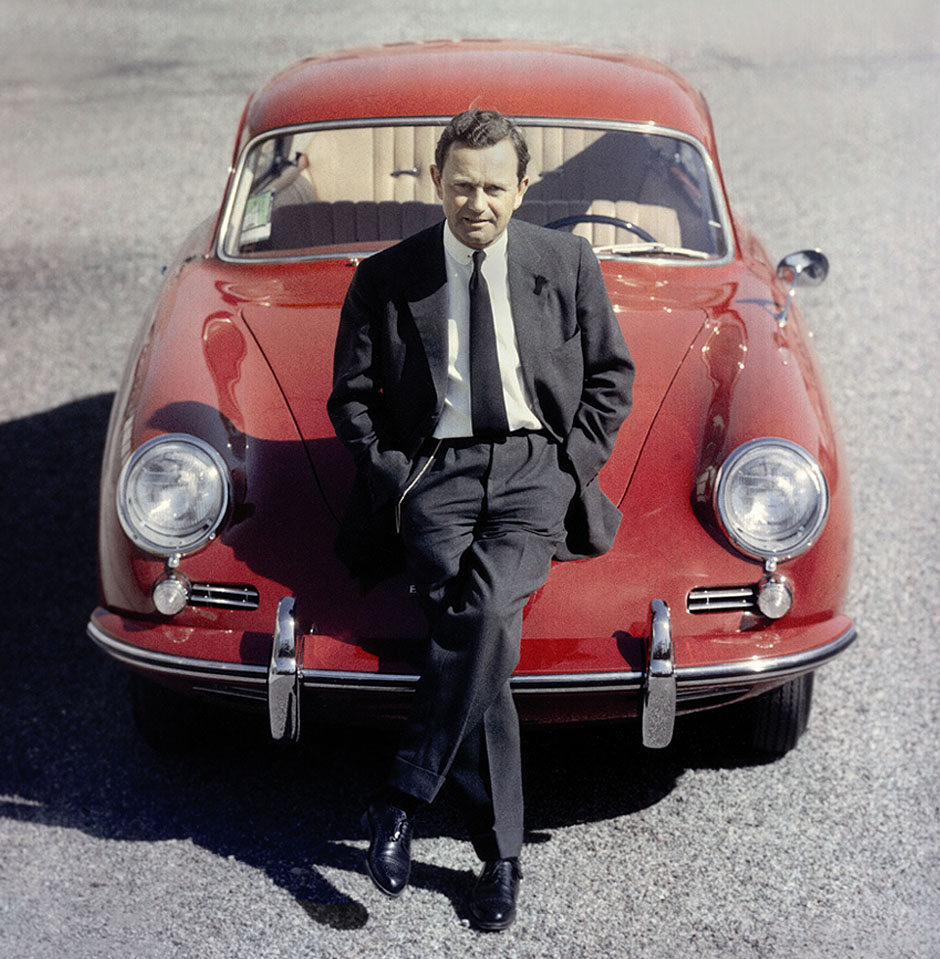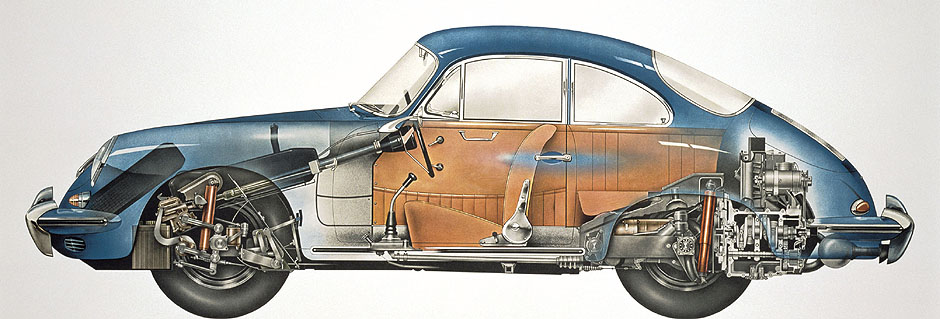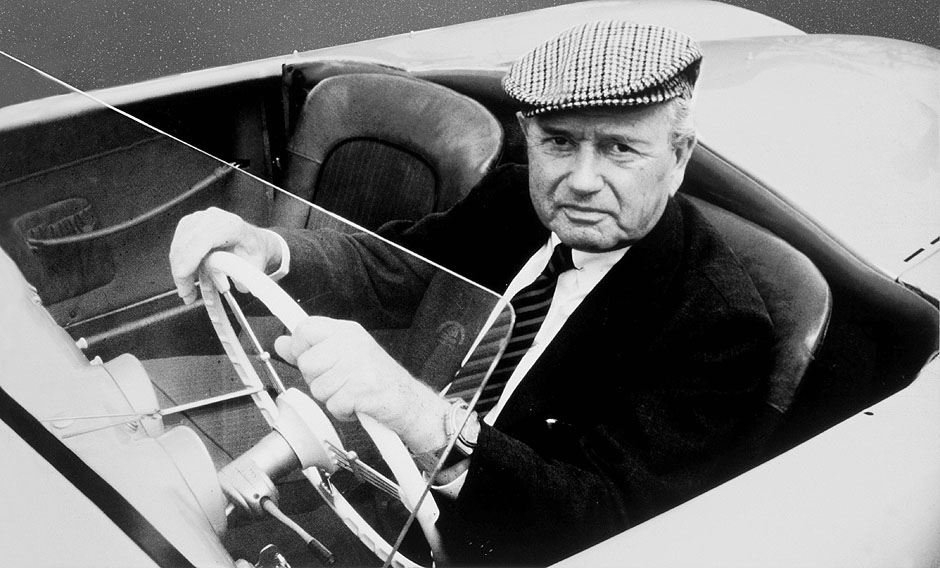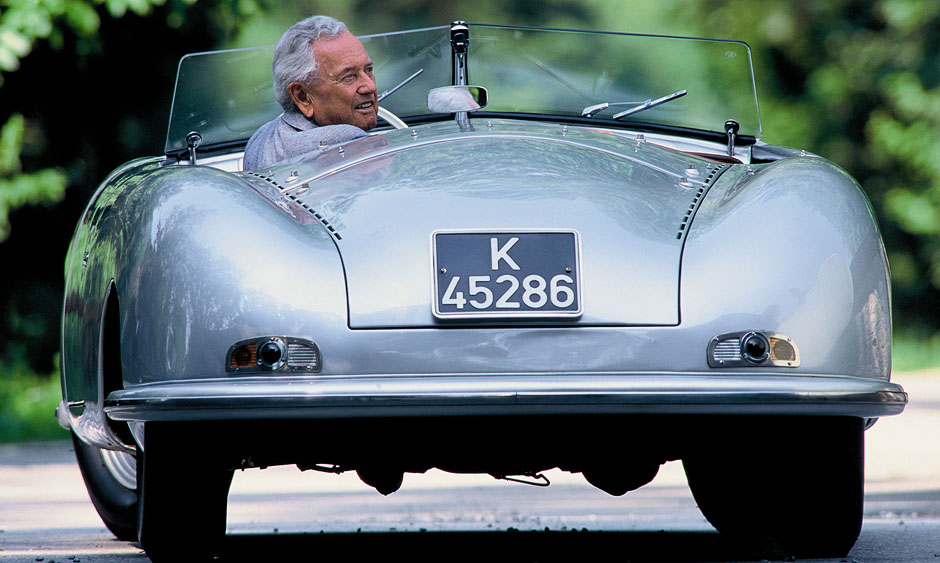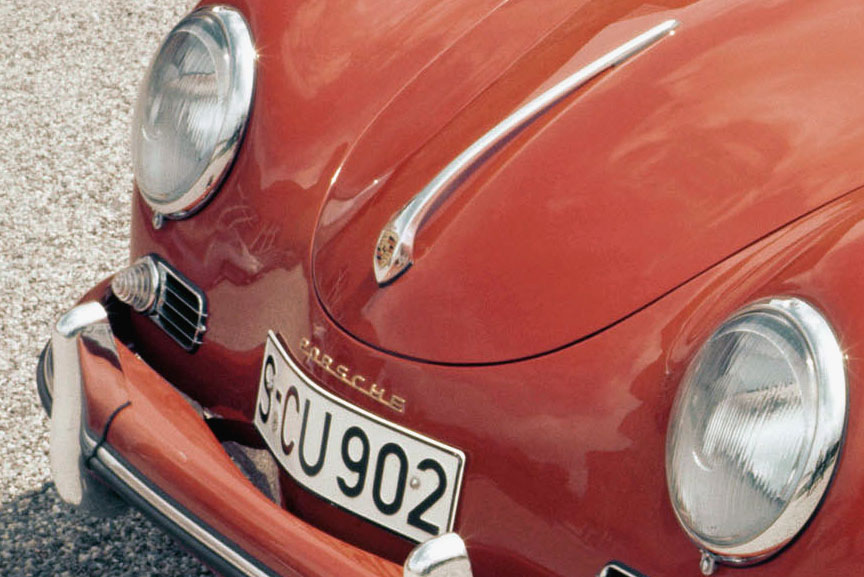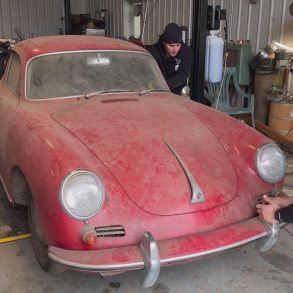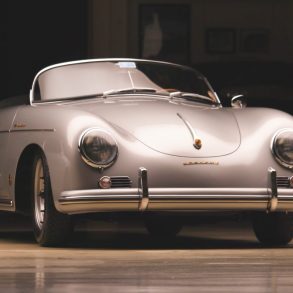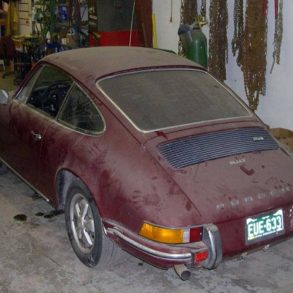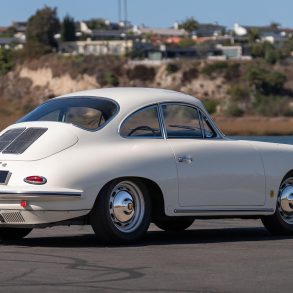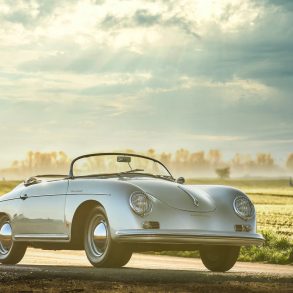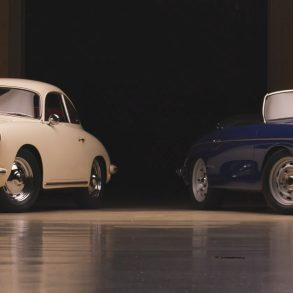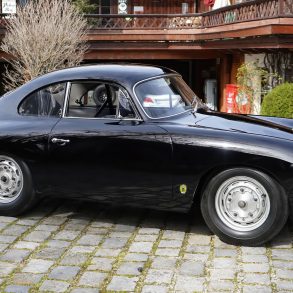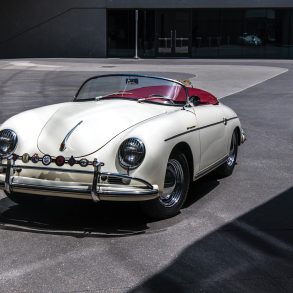The Porsche 356 Story
Porsche engineering company had designed cars for other companies for a long time, but it was finally in 1948 that a first “Porsche” was made under the leadership of Ferdinand Anton Ernst “Ferry” Porsche, the son of Ferdinand Porsche. At that time Porsche company was located in Gmünd, Austria. Today we call the first mid-engined Porsche roadster as 356/1 (or 356 no. 1) to distinguish it from the rear-engined Porsches that followed. The 356/1 and the 356/2 cars built in Gmünd had aluminium bodies.
The production soon switched to Stuttgart in Germany. The series production didn’t allow the use of handmade aluminium body panels, so, the cars were made of stamped steel panels. The first Stuttgart-built 356 have later been called as 356 Pre-A. These cars have either two separate windscreen glasses like the 356 built in Austria, or a sharply bent windscreen glass!
It was in 1953 that a racing car called America Roadster was built in small series. Considering it had an aluminium body, it is even more desirable than the 356 Speedster that followed it.
During the 356 A generation, a few cars were already fitted with the 4-cam Carrera (racing) engines in the size of 1.5-litre and 1.6-litre. Although the 356 had different “generations” up until 356 C, the biggest change to the body design happened during the 356 B generation. The earlier 356 B cars had a body called T5 and the later cars had a T6 body. The 356 C, too, had the T6 body. The main new thing with the 356 C were its disc brakes.
The flat-4 engines in the 356 evolved from single camshaft 1.1-litre to the 4-cam 2-litre Carrera 2 available for the 356 B T6 and the 356 C.
Although the 356 sales numbers were rising almost year by year, and a whopping 50% in 1964, the plans were already set and the 356 was dropped to make room for the series production of the 901 (911) in the end of 1964.
Porsche 356 “Pre A” (1948 to 1955)
The first generation of the Porsche 356 is referred to as the Porsche 356 Pre-A and runs from 1948 through 1955. Starting life with a batch of aluminum bodied cars that were hand produced in Gmund, Austria, by 1950 the company had moved production of the bodies to coachbuilder Reutter and was in full production. This first generation of the 356 body styles included a coupe and a cabriolet. The engine started at 1100 cc and initially shared its case with the humble Volkswagen. In 1951, 1300 cc and 1500 cc engines with considerably more power were introduced. In 1953, the 1300 S or “Super” was introduced, and the 1100 cc engine was dropped. In 1954, the Speedster was introduced as a stripped down roadster. In 1955, the final year of the 356 Pre A, saw the introduction of the race inspired 1500 cc, 110 hp, four-cam motor for the 356 Pre-A Carrera. The subsequent generation of the 356 followed in late 1955 and is known as the Porsche 356 A.
Beginning in 1954, a new version of the Pre A 356 was introduced that is now known as the Porsche 356 Pre-A Carrera, with a powerful engine that was available in coupe, cabriolet, and Speedster variants. Highly desirable today, the Carrera name denotes the race inspired 1500 cc four cam motor that produced an astounding 110 hp. Approximately 97 of these motors were produced sometime between 1954 and early 1955. The Carrera versions would continue in the next generation 356 as the Porsche 356 A Carrera.
Introduced in late 1954, the Porsche 356 Pre-A Speedster was a stripped down low cost sports oriented 356. It had a cut down windshield, lightweight removable top, and side curtains instead of roll up windows. It could be had with a 1500 cc engine that produced 55 hp. While production numbers are spotty, some experts believe that production of the 356 Pre-A Speedster was limited to 200 cars. It continued in the next generation of the 356 as the Porsche 356 A Speedster.
Porsche 356 A (1955 to 1959)
Following its initial release as the Pre-A 356, the Porsche 356 A was released in late 1955. With numerous small but significant changes, the 356 A was introduced with the internal factory designation “Type 1”, giving rise to its nickname “T1” among enthusiasts. Body styles included coupe, cabriolet, and Speedster. For the coupe and cabriolet, exterior changes included a curved windshield that replaced the “bent” windshield of the Pre-A model. The other major change was to the interior dashboard that now had a padded top and a more modern look. Engine displacement included the 1300 cc motor, but most were equipped with the 1600 cc motor which also could be had as a “Super” version. In early 1957 a second revision of the 356 A was produced, known as Type 2 (or T2). In late 1958 the Speedster was replaced by the Convertible D, the “D” denoted the coachbuilder Drauz. It had a few more creature comforts, most significantly roll up windows. The exotic four cam race inspired motor also became available in the A. 356’s so equipped are denoted as the 356 A Carrera. The 356 A generation was replaced by the Porsche 356 B in late 1959.
After its introduction in late 1954, the Porsche 356 A Speedster continued life in the 356 A generation as a stripped down low cost sports oriented 356. It had a cut down windshield that could easily be removed, lightweight removable top, and side curtains instead of roll up windows. It could be had with the 1500 cc engine that produced 55 horsepower (a limited number were made with the Carrera engine). Popular in the United States for use in racing and sports car events, the Speedster became the iconic version of the 356. Total production is estimated at 3,944 cars between 1955 and mid-1959, when it was replaced by the Porsche 356 A Convertible D.
Produced in 1959 only, the Porsche 356 Convertible D was the replacement for the 356 A Speedster. Major differences were the addition of roll up side windows, a better convertible top, and a slightly taller windshield, though it was still easily removable. Total production was 1,330 cars. The “D” was a reference to the coach builder Drauz. It was replaced by the Porsche 356 B Roadster in 1960.
Porsche 356 B (1959 to 1963)
In late 1959 significant styling and technical refinements gave rise to the 356 B (a T5 body type). A unique “Karmann hardtop” or “notchback” 356 B model was produced in 1961 and 1962. The mid-1962 356 B model was changed to the T6 body type, sporting twin engine lid grilles, an external fuel filler in the right front wing/fender, and a larger rear window in the coupé. Notably, the Porsche factory did not call attention to these quite visible changes with a different model designation. However, by late 1963, when the T6 got disc brakes, with no other visible alterations, they called it the 356 C.
Porsche 356 C (1963 to 1965)
The last revision of the 356 was the 356 C introduced in late 1963, featuring disc brakes all around, along with an option for a more powerful pushrod engine known as the 356 SC. Production of the 356 peaked at 14,151 cars in 1964, the year that its successor, the new 911, was introduced to the US market (it was introduced slightly earlier in Europe). The company continued to sell the 356 C in North America through 1965 as demand for the model remained quite strong in the early days of the heavier and more “civilized” 911.
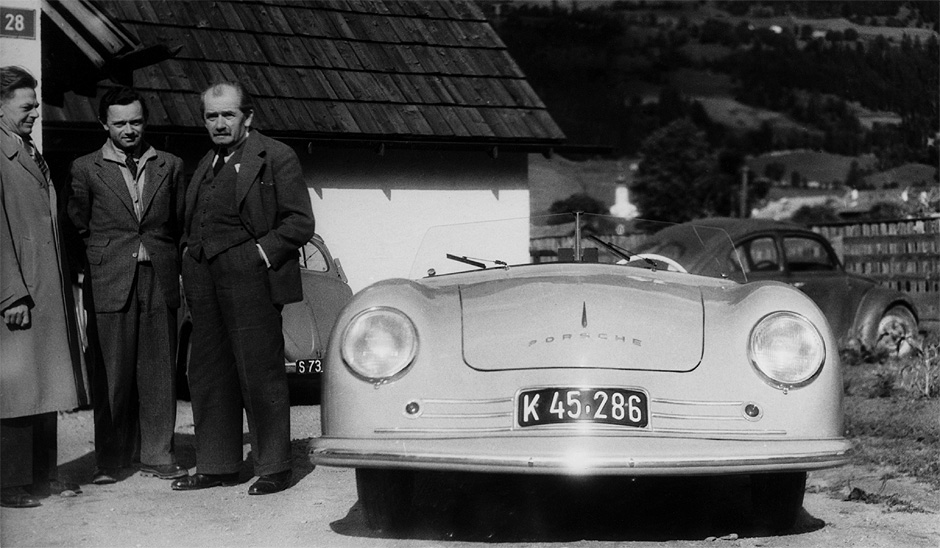
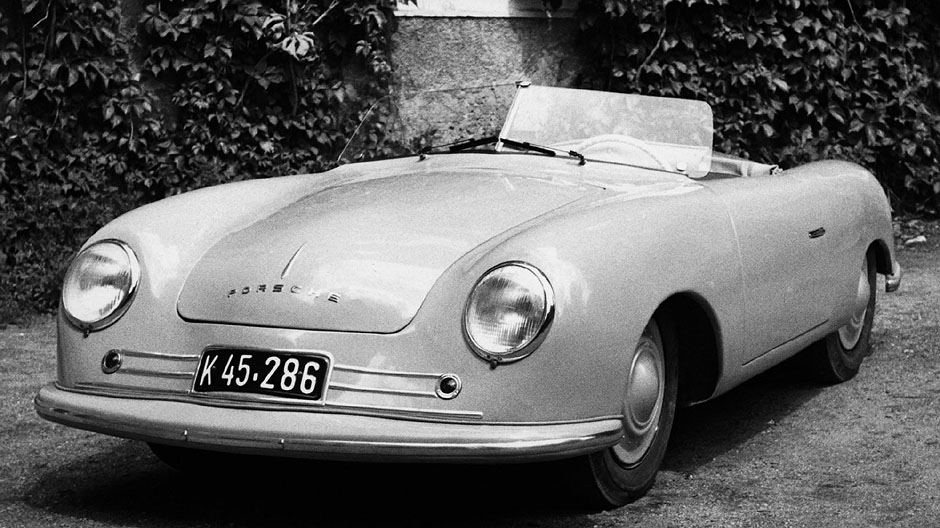
© Porsche
